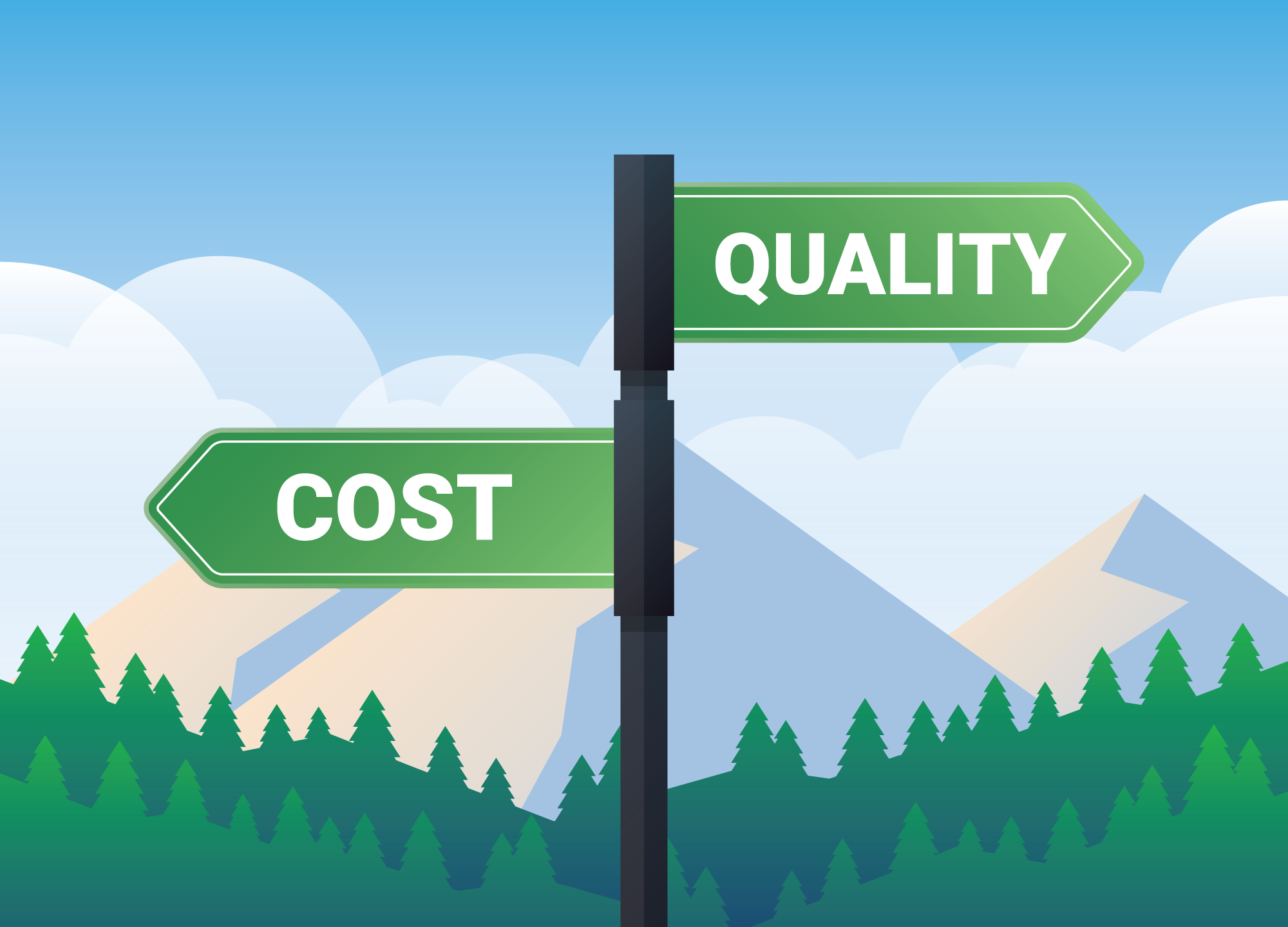How to produce software products with the highest quality and lowest cost?

Have you ever thought about the efficient period for a software to be completed?
Sometimes it takes a couple of weeks and sometimes it takes months! The way it goes depends on the product itself, on the required functions and also on how you are going to approach it.
To get a working software product from an idea, you have some steps to follow and milestones to achieve. First, you have to make sure that you have picked the right idea that has achieved both validation and a proof of concept, then a proper collection of feedback is required to build a prototype which is the initial version of your product.
After that, you have to scale your software up, maintain it, grow new features and acquire more customers.
It is also important to produce a software with a reasonable cost compared to its quality, which could be managed using software development life cycle (SDLC) that can be defined as a set of development activities which produce software with the highest quality and lowest cost in the shortest possible time, followed by the software testing life cycle (STLC) phases.
So let’s make a simple comparison between SDLC and STLC.
1.1. What is SDLC?
SDLC starts with Gathering requirements from the clients and ends with the final product that contains the defined needs and conditions.
1.2. SDLC Stages
• Analysis: During this phase, business analyst and project manager set up a meeting with the client to gather all the relevant information to develop a product as per their expectations.
• Design: The technical details of the design are discussed with the stakeholders, during the design phase, developers and technical architects start the high-level design of the software.
• Development: Once the developer gets the designed document then the software design is translated into a source code.
• Testing: In this phase, the developed software is tested completely and any defects found are assigned to developers to get them fixed, the testing phase includes the process of evaluating released software to determine whether it meets the requirements or not.
• Maintenance: In case you faced some issues or any required enhancement is needed, the developers will handle them.
1.3. SDLC models
The most common SDLC examples and models are listed below
Waterfall Model: In this model, the development activities are completed successively, however test activities only occur after all other development activities have been completed.
V-model Model: V-model is a type of SDLC model where process executes in a sequential manner in V-shape, unlike the waterfall model, the V-model integrates the test process throughout the development process. And in this model, each development activity should be tested.
- Agile Model: In Agile methodology, after every development iteration, the customer is able to revise the result in order to give his approval.
2.1 What is STLC?
STLC stands for Software Testing Life Cycle. It is a set of sequence activities to evaluate the quality of the software or the system performed by the development team (developer or tester) and the customer.
2.2 SDLC vs STLC
SDLC | STLC |
Stands for Software Development Life Cycle | Stands for Software Testing Life Cycle |
SDLC is a set of development activities and testing is a part of this cycle | STLC is part of SDLC |
Applied in the development area | Applied in real and development area |
Requirement Gathering Phase: Business analyst gathers the requirements and creates a development plan | Requirement Gathering Phase: QA team analyze requirement documents and create a system test plan |
Phases: Requirement Gathering, Analysis, Design, Coding, Testing, Deployment & maintenance | Phases: Requirement Analysis, Test Planning, Test Design, Environment Setup, Test Execution, Test Closure |
Still have some questions? get your free consultation here and our team of experts will get back to you.

